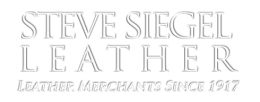Feet shapes around the world
A highly-generalized comparison of feet shapes from shoegazing.com
Central and Southern Europe
England, Italy and Spain have been important to the shoe industry in Europe and the world, hence their peoples' feet are the basis of some sort of “standard”. They are also generally medium in their shape, right in the middle in width, and their instep is neither high nor low. European (and even North American) feet have historically been relatively bony, but with an increased average weight more people nowadays have a “fleshier” foot.
Northern Europe
In the north of Europe people have slightly wider feet, while the rear part and heel are more “standard” in width. This, in combination with a slightly higher instep, and thus a higher arch (normally the foot’s volume is roughly the same, so if the instep/wrist is high the underside follows, and vice versa, if instep is low the arch is lower) which can make it harder to get the fit right.
Russia and Eastern Europe
Here the characteristics are similar to the northern European foot. Many have high insteps and wide feet. It's often a challenge to find shoes that fit comfortably and look graceful.
Asia
Asian feet are much smaller than western feet - on average about 2 cm shorter. The instep is lower, they are wider and less bony, the heels more cupped in profile, all of which can make a difference between Asian and European shoes. In Japan or China if you have feet about the size of UK9 / EU43 or greater, it’s almost impossible to find commercial shoes.
North America
A clear and interesting difference to European feet, the Americans generally have narrower feet. Quite similar in shape, but not as wide (for unclear reasons, this only applies to men; women’s feet are very similar on the two continents). This is why it’s common for European brands, for example, who use the term E for standard width in Europe, to have the narrower D width as the standard for the shoes sold in the US market. With the increased average weight of people, especially in the US, that seems to be changing.
Africa
A large part of the population in the central parts of Africa has a slightly different underside of the feet where the outside of the middle part lies more towards the ground and contributes to the rolling step, which is believed to be one of the reasons that Africans often have a light, flowing running pace. Common are slightly triangular-shaped feet, with a clear triangular shape from the heel to the toes.
Australia
Australians have both slightly shorter and wider feet than Europeans. The shape is relatively similar to the Central European foot.
Gleaned & greatly-edited from https://shoegazing.com/2019/06/03/in-depth-feet-shapes-around-the-world/
The US Tanners Council 1957 5th edition
US Definitions of Some Popular Leather Terms
Full Grain Leather: "Term applied to the outer surface or grain portion of the hide from which only the hair has been removed" - Tanners' Council of America -
Accordingly, any mechanical manipulation of the grain, from plating, embossing, boarding, jacking, and buffing is NOT full grain leather according to traditional US definition.
This differs from the much less strict EU definition which allows for grain manipulation, without buffing of grain.
The US definition description is much more strict and describes a more natural, and consequentially much more expensive item. When you see leather which is advertised as "full grain", be wary. It is a much overused and abused term.
Box Calf: "Boarded Leather" , " Sides or skins finished by folding with the grain side in and rubbing the flesh side with a cork-surfaced instrument known as a hand-board. Machinery is now also used. The effect is sometimes imitated by embossing. Also called 'box' or 'willow' finish."
Vegetable-Tanned: This definition seems clear. However, unless the leather which you are purchasing has been lab-tested, don't expect it to be vegetable-tanned. We have found many examples of leather that is sold as vegetable-tanned which is chrome-tanned. We have found these exceptions in some goat skins finished by producers/tanners across the Atlantic.
Reference Materials
- Watch video on the Siegel Effect to test for Vegetable Tanned Leather
- Watch video on the Ewald Effect- for Oil Tanned Leathers
- Leather for Libraries recommendations for choosing the best leathers for bookbinding, per British Publication, approximately 1905
- Betty Haines re: Archival Bookbinding Leather
- Genuine Morocco published in Guild of Bookworkers. Author Steven Siegel
- Traceability is a video showing traceability for European Calfskins
- Sample Sulfur-free Calf
- “The Romance of Leather”, published 1937, by Tanners’ Council of America – This document contains a wealth of information on the “basics” of leather.
- Report of the Committee on Leather for Bookbinding, Royal Sociey of Arts (Great Britain), London, 1905
- Affidavits for Archival Native Tanned Sokoto Leather From 3 museum experts in Sokoto, Nigeria
- Native Tanned Colored Archival Sokoto Leather
- Dry Fiber Ageing Analysis SF Calf vs 5 other bookbinding calfskins

Begun October 2022